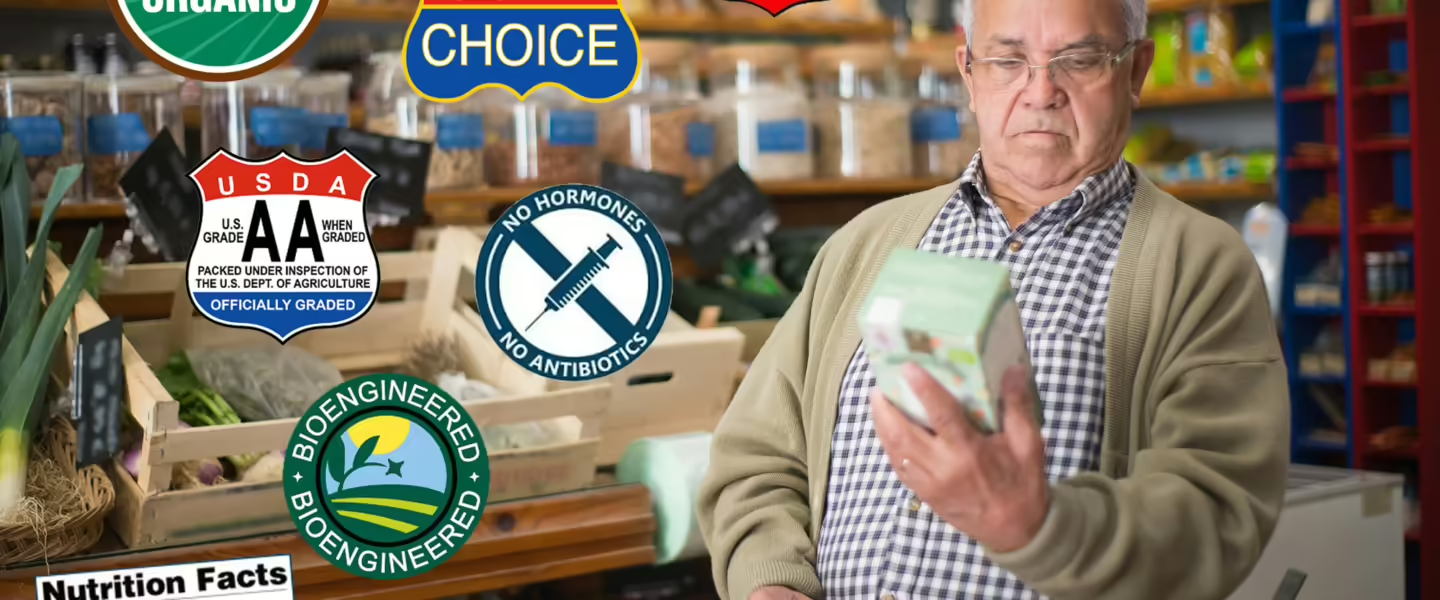Welcome to Saturday Hashtag, a weekly place for broader context.
|
Listen To This Story
|
Label fraud poses significant risks to public health, public trust, and economic integrity. Most people understand that all product info — labels, expiration dates, recyclability, ingredient lists, etc. — is designed to deceive not inform, but this dynamic has moved to the next level with food fraud: economically motivated adulteration (EMA). This is defined as the deliberate substitution, addition, tampering, or misrepresentation of food, food ingredients, or food packaging, or false or misleading statements about a product, for economic gain. For example, manufacturers might add a cheaper vegetable oil to the more expensive olive oil but label the product as 100 percent olive oil. EMA also occurs with other products, including animal food. You can find a database of offenders here.
Food fraud is difficult to catch because by design it is covert and there is almost no enforcement.
This problem has exploded 10 fold since 2020. Recent estimates suggest that at least 1 percent of global trade is affected, at a cost as high as $40 billion a year.
It is clear that industry sponsored regulation is a failure.
Food fraud can lead to health issues and even death. Some examples include heavy metal poisoning from adulterated spices and allergic reactions to hidden, substituted ingredients that contain food allergens.
The Fair Labels Act is an attempt to address issues in meat and poultry but they have the same enforcement problem.
Label fraud is also a problem for nonfood products like clothing, furniture, automobiles, diapers, cosmetics, and any number of other consumer goods. Materials and manufacturing processes are either falsified or just not listed.
The European Union is leading the way in some industries. The European Textile Regulation requires that manufacturers and retailers inform their consumers adequately on the composition of products; violators face legal repercussions and/or financial claims. When it comes to regulatory enforcement, the UK and the EU tend to be better than the US across all regulatory agencies.
The FDA plans new label regulations for food products to go into effect in 2027 and even warning labels to be added to food. Ironically, the US government is also pushing for labels modeled after nutrition labels — for your internet.
All these labels are very nice PR, but the government can’t enforce the existing regulations. It seems like legislating enhanced enforcement would be more effective than creating more labels.
Exposing Food Fraud: The New Hidden Truth
From QAssurance: “Discover food fraud secrets, its impact and how to prevent it, by reading this article based on trusted sources from experts on food safety.”
Food Labels Are LYING to You. Spot These Lies on the Package!
The author writes, “Imagine the following scenario… You’re grocery shopping and trying to find a safe cooking oil. You’ve been cleaning up your diet and want something healthy to saute all those veggies you’ve been eating. … You see a shelf lined with cooking sprays like PAM, and recall hearing that those aren’t healthy for you either, until you see this one… It says simply ‘100% Extra Virgin Olive Oil’ right there on the front of the can. 100% means 100%, right?”
How To Decipher Food Labels
From The Humane Society: “Which meat, dairy and egg products are most humane? What do ‘cage-free’ and ‘humanely raised’ really mean? Here’s how these labels give you information about the producers’ animal welfare standards.”
The Food Industry’s False Claims About Front-of-Package Nutrition Labeling: A Fact Sheet
From the Center for Science in the Public Interest: “The U.S. Food and Drug Administration (FDA) is developing a policy to require consumer-friendly, front-of-package nutrition labels on foods and beverages sold in the U.S. The agency may well adopt labels to help consumers compare the healthfulness of different foods at a glance by clearly identifying products that are high in added sugars, sodium, and saturated fats. Food industry lobbyists make cynical claims to oppose mandatory front-of-package labeling, but the facts do not support these claims.”
6 Misleading Food Label Terms and What They Really Mean
The author writes, “Some of the terms on the front of food packages aren’t regulated by the Food and Drug Administration, which oversees nutrition and health labels and claims. ‘Manufacturers use colorful images, product names and claims that give the food a “health halo,”’ says Amy Keating, a Consumer Reports nutritionist. ‘In some cases, the claims are factually true but still can be quite misleading.’ Here are some claims experts say to ignore.”
It’s Time To Rethink Food Labels
The author writes, “Rising prices are not the only challenge consumers face in today’s grocery aisle. It seems one needs to be a linguist, scientist, and mind reader to comprehend the myriad terms cluttering the labels on the most popular packaged foods. The latest United States Food & Drug Association (FDA) food label is confusing at best, particularly for shoppers seeking ‘healthier’ options. A recent consumer survey revealed that the perception of healthfulness is a key driver of food purchases for most individuals. But gauging the health quality of foods can be daunting — made all the more difficult by misleading nutrition information that appears on most food labels.”
It’s Time to Finally Clear up Food Date Label Confusion for Consumers
The author writes, “Roughly nine years ago, while serving as Vice President for Food Safety at the world’s largest food retailer, I surveyed how many different date labels were used by food producers to convey that food was nearing its expiration date. Much to my surprise, we counted 47 different and unnecessarily complicated labels. They ranged from ‘freshest-by,’ ‘enjoy-by,’ to ‘sell-by’ and many more. This diversity in how to convey the same message resulted in confusion and food waste.”
Here’s What You Need To Know About Toxic Furniture
From Forbes: “While toxins in furniture aren’t a reason to re-decorate immediately, knowledge of the potential dangers of toxins in furniture is definitely something to consider when purchasing new items for the home.”




